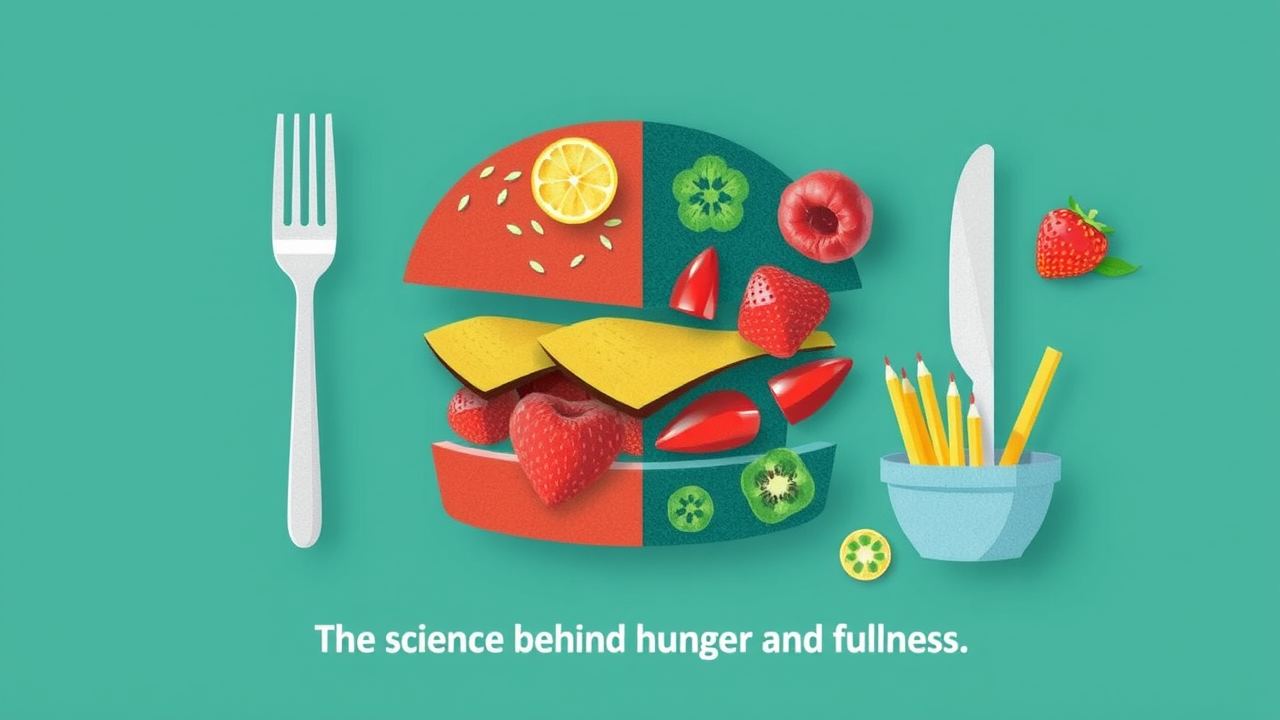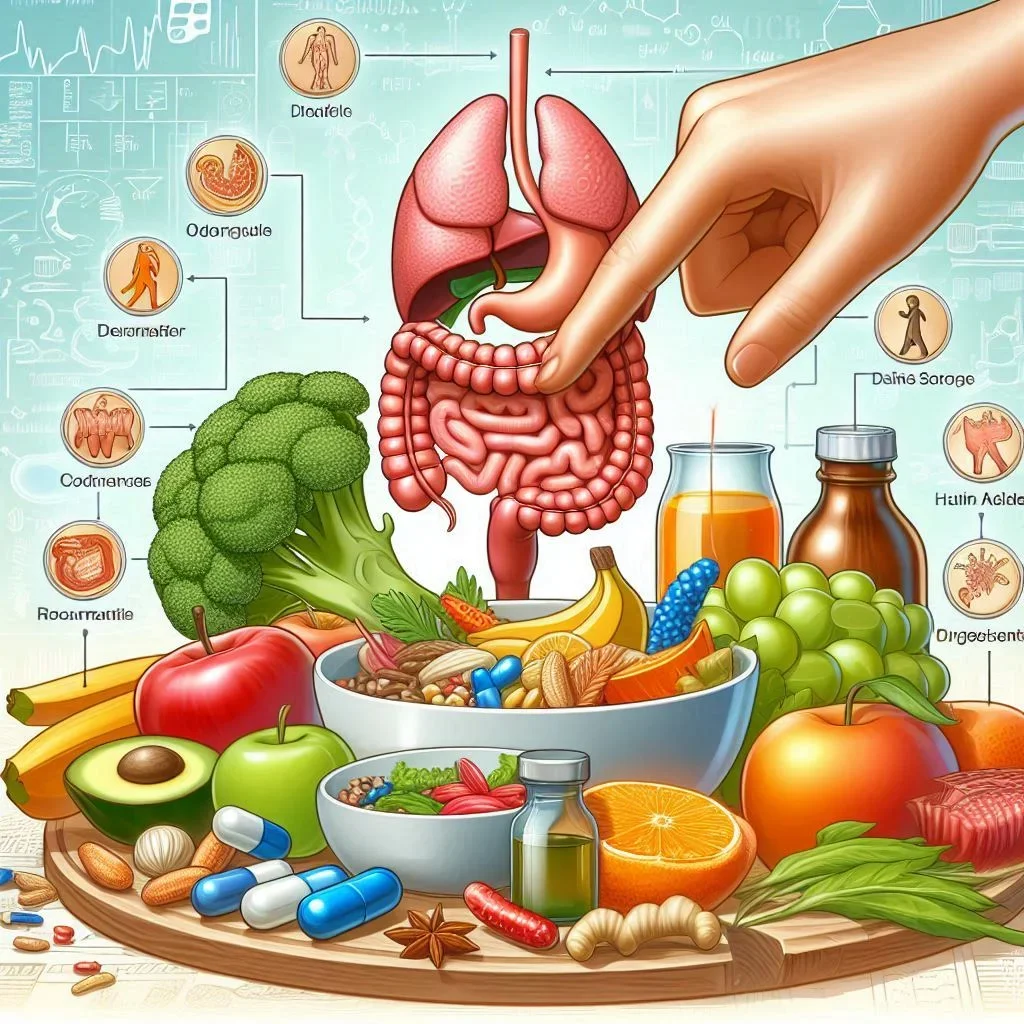Did you know that small lifestyle tweaks can reduce your appetite by up to 30%? Discover simple, effective ways to reduce appetite and gain control over your cravings, making healthier eating habits easier and more sustainable. In this comprehensive guide, you’ll find evidence-backed strategies and expert tips to help you feel full, suppress appetite naturally, and reduce hunger without feeling deprived.

Whether you’re aiming to lose weight or just want to make healthier choices, the following tips and techniques are designed to empower you with actionable solutions tailored for real life challenges.
Small Lifestyle Changes, Big Impact – Effective Ways to Curb Appetite
Struggling with appetite can be a significant obstacle on the path to healthy living and successful weight management. Fortunately, there are ways to curb appetite that don’t involve drastic fad diets or expensive supplements. Through purposeful, small lifestyle changes—such as adjusting what you eat, how you eat, and your everyday habits—you can make a remarkable difference in your ability to feel full and reduce appetite naturally.
The science of appetite regulation tells us that by focusing on holistic and sustainable habits, we can suppress appetite, improve well-being, and foster long-term success with weight loss or healthy weight maintenance. Throughout this guide, you’ll uncover the most practical, research-based strategies to help you gain mastery over your appetite and create a harmonious relationship with food, starting today.
Why Appetite Control Matters for Better Health
Appetite control is crucial not only for those looking to lose weight but also for maintaining a balanced, healthy lifestyle. When you’re able to manage your hunger signals effectively, you reduce the risk of overeating and unwanted weight gain. This is because your body responds less to unnecessary cravings and more to genuine nutritional needs. In fact, healthy appetite regulation is connected to improved metabolic health and lower risk of chronic illnesses such as type 2 diabetes and cardiovascular disease.
Acknowledging that appetite and hunger are influenced by both physiological and psychological factors, adopting ways to reduce hunger can make it easier to resist temptations, control calorie intake, and maintain stable energy levels throughout the day. Appetite control isn’t about deprivation—it’s about creating habits that work with your body rather than against it, resulting in sustainable health benefits over time.

Understanding Appetite: The Science Behind Hunger and Fullness
Your appetite is not just a simple urge—it’s a complex physiological and psychological process involving several hormones and brain pathways. Understanding this process can empower you to make smarter decisions about when, what, and how much to eat. The way the body signals hunger and fullness is influenced by what you eat, how rested you are, your stress levels, and many other factors. Today, more people are recognizing the importance of natural appetite cues and fullness signals, guiding their choices toward healthier routines that can reduce appetite and prevent overeating. Let’s delve into the science of hunger to see just how interconnected our body and mind truly are in the regulation of appetite and hunger.
How Your Body Signals You to Eat: The Role of Hormones and Brain Chemistry
The body’s hunger and fullness sensations are directed by a network of hormones and neural signals. Ghrelin, often called the “hunger hormone,” rises before meals, triggering the sensation that it’s time to eat. After eating, leptin and other satiety hormones send signals to the brain, letting you know you’re full. These communication pathways also interact with pleasure and reward centers in your brain—sometimes leading you to eat even when you’re not truly hungry.
Research shows that understanding these regulatory functions can empower you to better distinguish true hunger from emotional or habitual cravings, ultimately helping to suppress appetite and regulate food intake. Becoming more aware of these cues is a key strategy in effectively using ways to curb appetite, especially if you struggle with mindless or stress-induced eating.
For those interested in enhancing their appetite control through nutrition, exploring natural appetite suppressants like lean proteins, green tea, and fiber-rich foods can be especially effective. You can discover more about these powerful fat-burning foods and how they contribute to feeling fuller for longer in our guide on the best fat burning foods for appetite management.
Common Triggers and Myths: What Actually Affects Your Appetite?
Many people believe that hunger is solely about an empty stomach, but that’s only part of the story. Emotional stress, sleep deprivation, and highly palatable (sugary or fatty) foods can hijack your hunger signals and make you feel hungrier than you really are. Myths like “eating less automatically means less hunger” ignore the influence of hormones, types of food, and habits on your appetite.
For instance, skipping meals often leads to rebound overeating later, and consuming refined carbs can spike blood sugar, causing you to feel fuller for only a short time. Understanding the real triggers versus common misconceptions gives you an advantage in mastering your appetite and making informed food decisions.

Top Ways to Curb Appetite and Feel Full Naturally
Finding ways to curb appetite naturally is about making smart adjustments in your diet and routine. From choosing the right mix of nutrients to modifying eating patterns, simple tweaks can strengthen your body’s fullness signals and help you feel satiated longer. Below are strategies that integrate seamlessly into everyday life and are backed by nutritional science. These habits can help reduce appetite, decrease cravings, and keep you satisfied between meals—making it easier to maintain or achieve a healthy weight.
Choose High-Fiber, Calorie Foods to Feel Fuller Longer
High-fiber calorie foods are among the most effective natural appetite suppressants available. Fiber, found in foods like lentils, chickpeas, oats, fruits, and vegetables, expands in your digestive tract and slows down the emptying of your stomach. This means you feel full and satisfied for longer periods after eating, which can reduce overall calorie intake and suppress your appetite throughout the day.
Studies show that diets rich in fiber support weight loss, help reduce hunger, and promote gut health. Aim to fill half your plate with vegetables and whole grains at every meal. These calorie foods not only support digestion but also help regulate blood sugar spikes that can trigger a sudden desire to eat more, further supporting your goal to curb appetite.
Lean Proteins and Appetite: Why They Help Suppress Appetite
"Including lean proteins in your meals is a proven way to curb appetite and reduce overall calorie intake." — Registered Dietitian
Lean proteins such as grilled chicken, turkey, eggs, fish, and legumes have a unique ability to keep you feeling full longer compared to carbs or fats alone. Protein boosts the production of peptide hormones (such as PYY and GLP-1), which act as appetite suppressants and send fullness signals to your brain, helping you feel fuller for longer. Studies show that increasing your intake of high-protein foods can lead to decreased food intake and greater success in weight loss efforts.
Aim for a source of lean protein at each meal to stabilize blood sugar levels and avoid the energy crashes that trigger unnecessary snacking. The dual benefits of muscle maintenance and appetite regulation make lean proteins a cornerstone strategy when exploring ways to curb appetite.
Mindful Eating: How Presence at Meals Helps Reduce Appetite
Mindful eating is the practice of paying full attention when you eat—focusing on flavors, textures, and your body’s natural signals of satiety and hunger, making it a powerful natural appetite suppressant. This habit is one of the most effective ways to reduce appetite and prevent overeating. Research shows that eating without distractions (like screens) and chewing slowly can help you recognize fullness cues earlier, leading to a natural reduction in calorie consumption.
Over time, mindful eating trains your brain away from emotional or habitual eating and helps you enjoy your meals more. Simple tips include putting down your fork between bites, savoring each mouthful, and reflecting on how the food makes you feel. Practicing mindful eating regularly can be transformative for your appetite, especially if you often find yourself reaching for snacks out of boredom or stress.

Stay Hydrated: Water and Other Natural Appetite Suppressants
Drinking water before and between meals is a powerful and often overlooked natural appetite suppressant that helps you feel full and reduce appetite. Adequate hydration helps your stomach feel fuller and may curb the desire to eat when you’re actually just thirsty, not hungry. In one study, participants who drank water before meals ate fewer calories and reported a greater sense of fullness.
Apart from water, certain herbal teas—like green tea and peppermint—are also natural appetite suppressants with additional health benefits. Staying hydrated supports metabolism, helps regulate hunger hormones, and can even assist with weight loss goals. Make it a habit to drink at least a glass of water before your main meals, and reach for herbal teas to reduce cravings between meals.
Natural Appetite Suppressants: Foods, Herbs, and Lifestyle Habits
When searching for ways to curb appetite, turning to natural options can be both safe and effective. Many foods, herbs, and lifestyle routines have been shown to act as natural appetite suppressants, helping to reduce hunger without the potential side effects of pharmaceutical solutions. These suppressants work through various mechanisms—some slow down digestion, while others trigger the release of satiety hormones or enhance the effects of fullness signals. Below, we explore popular foods and herbs that can help you control your appetite and offer tips on how to incorporate them into your daily routine for lasting results.
Green Tea and Other Natural Appetite Suppressants
"Green tea is a gentle, natural appetite suppressant that may help control hunger between meals." — Nutritionist
Green tea is one of the most studied natural appetite suppressants, valued not only for its antioxidant content but also for its ability to reduce appetite and boost metabolism. Research has shown that compounds in green tea can help suppress appetite, boost metabolism, and support weight management. Sipping a cup of green tea between meals can help you stave off hunger pangs, reduce calorie intake, and take advantage of additional health benefits such as improved metabolism and heart health. Other herbal teas, such as oolong, peppermint, and ginger, also have mild appetite suppressant properties when consumed regularly. Make green tea and herbal teas a daily habit to help you stay hydrated and naturally manage your desire to eat.
Best Natural Appetite Suppressants: Spices, Supplements, and Herbal Teas
A variety of natural appetite suppressants can be found right in your pantry. Spices like cinnamon, ginger, and turmeric not only add flavor to your meals but are linked to improved blood sugar control and reduced cravings. Supplements such as glucomannan (a plant-based fiber) and fenugreek seeds are gaining attention for their abilities to promote satiety and reduce food intake. Additionally, sipping on herbal teas like chamomile, fennel, or peppermint before or after meals may help soothe digestion and curb appetite. Integrating these natural appetite suppressants into your snacks and drinks not only diversifies your nutrition but also makes your appetite management holistic and enjoyable.

Reduce Appetite with Smart Lifestyle Changes
Beyond diet, your daily habits and routines have a profound impact on hunger and fullness signals. Adopting positive lifestyle changes—like improving sleep quality, staying active, and managing stress—can reduce appetite and boost your efforts to eat mindfully. Small but intentional adjustments can alter the hormonal environment in your body to promote satiety and lessen the likelihood of unnecessary snacking. Below, we examine three crucial lifestyle pillars for effective appetite management.
Get Enough Sleep to Reduce Hunger Hormones
Lack of sleep is a significant but often underestimated trigger for increased appetite and unhealthy cravings. Sleep deprivation leads to a rise in the hunger hormone ghrelin, while simultaneously reducing leptin—the hormone that makes you feel full. This hormonal imbalance increases your risk of overeating and impedes weight loss.
Studies show that people who consistently get between 7-9 hours of restful sleep per night experience fewer hunger pangs and have a more regulated appetite overall. Prioritizing good sleep hygiene, such as sticking to a consistent schedule and creating a calming bedtime routine, can help reset hormone balance and foster a natural reduction in appetite and hunger.
Exercise and Movement: Their Role in Reducing Appetite
Physical activity does more than just burn calories—it also plays a direct role in appetite regulation. Engaging in moderate-intensity exercise like walking, cycling, swimming, or yoga can suppress the hunger hormone ghrelin while boosting peptide hormones that help you feel full. Regular movement not only aids in weight management but also improves mood and reduces emotional eating triggers. Studies have shown that even a brisk walk after meals can lead to lower caloric intake over time. Incorporate enjoyable forms of exercise into your daily or weekly routine, making it a key part of your overall strategy to reduce hunger naturally and sustain weight loss.
Manage Stress to Reduce Appetite Naturally
Chronic stress is a well-documented driver of appetite and cravings, particularly for comfort foods high in sugar and fat. Elevated stress hormones (notably cortisol) can increase the desire to eat, making it challenging to stick to a balanced diet. Building stress-reducing habits—such as meditation, deep breathing, journaling, or spending time outdoors—can significantly dampen stress-induced appetite spikes. By regularly managing your stress, you can lower the frequency of emotional cravings, control portion sizes, and reinforce a healthy relationship with food. This holistic approach is crucial for anyone struggling with regular overindulgence due to stress.

Reduce Hunger: Practical Habits for Everyday Life
Applying ways to curb appetite in everyday living means building routines and habits that consistently promote satiety and discourage mindless eating. Simple adjustments in meal planning, frequency, and snack choices all contribute to more stable hunger levels and better willpower. Let’s explore practical habits and techniques for integrating these principles into your lifestyle for success you can maintain long term.
Meal Planning and Routine: Key Ways to Curb Appetite
One of the best ways to reduce appetite and avoid impulsive eating is by planning regular, balanced meals throughout the day. Structured meal planning helps you avoid extreme hunger, which often leads to overeating or poor food choices later on. By mapping out your meals and snacks in advance, you’re more likely to include satisfying foods that keep you full for longer—such as high-fiber vegetables, lean proteins, and healthy fats. Aim for a consistent eating schedule, allowing your body to establish predictable hunger cues. Over time, this structure helps your metabolism stay regular and makes healthy eating more automatic and less reliant on willpower alone.
Small, Frequent Meals Vs. Large Meals: Which Reduces Appetite Better?
The debate over eating frequency is ongoing, but research consistently finds that the quality of what you eat is often more important than how often you eat. For some, eating smaller, frequent meals every 3–4 hours can help maintain steady blood sugar and prevent severe hunger that can lead to overeating. Others may prefer fewer, larger meals with ample protein and fiber to feel full between eating periods. The key is to monitor how your body responds—both in terms of hunger levels and overall energy. The best approach is the one that lets you feel fuller and satisfied while supporting your health and weight goals.
Comparison of Natural Appetite Suppressants: Fibers, Proteins, Green Tea, Spices, and Herbal Supplements
Suppressant |
Mechanism |
Best Sources |
Main Benefit |
|---|---|---|---|
Fiber |
Slows digestion, increases bulk |
Lentils, oats, vegetables, fruits |
Feel full longer, less snacking |
Lean Proteins |
Promotes satiety hormones |
Chicken, fish, legumes, eggs |
Suppress appetite, muscle support |
Green Tea |
Boosts metabolism, mild appetite suppression |
Green tea leaves, matcha powder |
Reduces hunger, antioxidant support |
Spices |
Improves blood sugar, reduces cravings |
Cinnamon, ginger, turmeric |
Curbs sweet/fatty food intake |
Herbal Supplements |
Enhances satiety, slows gastric emptying |
Glucomannan, fenugreek, peppermint |
Supports appetite management |
Smart Snacking: Low Calorie Foods to Feel Fuller
Choosing low-calorie, nutrient-dense snacks can help manage appetite and reduce overall calorie intake. Great options include carrot sticks, celery, cucumber slices, Greek yogurt, hard-boiled eggs, and apple or bell pepper slices. These foods provide bulk, fiber, or protein—which all help you feel full without excessive calories.
When hunger strikes between meals, having these healthy options on hand can deter you from reaching for higher-calorie packaged snacks. Smart snacking supports stable energy levels and makes the transition to healthier eating habits seamless and enjoyable.

How to Use Appetite Suppressants Safely
While using appetite suppressants can be helpful for some, distinguishing between natural appetite suppressants and pharmaceutical options—and understanding potential side effects—is essential for safety and effectiveness. An informed approach ensures you can suppress your appetite without compromising your health. Here’s what you should know about different appetite suppressant types and how to use them wisely.
Understanding Over-the-Counter and Prescription Appetite Suppressants
Over-the-counter appetite suppressants range from fiber supplements and herbal teas to products containing caffeine or other stimulants. Prescription appetite suppressants are typically reserved for individuals struggling with obesity and are prescribed by healthcare professionals. They work by altering neurotransmitters in the brain to reduce hunger signals and food cravings. While effective for some, these products can have side effects such as increased heart rate, insomnia, or digestive upset. Always consult a medical professional before starting any new supplement or medication, especially if you have underlying medical conditions or take other medications.
Natural Appetite Suppressants vs Pharmaceutical Options
Both natural and pharmaceutical appetite suppressants can aid in managing appetite, but they differ substantially in their risks and benefits. Natural appetite suppressants—like high-fiber foods, protein, green tea, and herbal supplements—are typically safer, with minimal or no side effects when consumed as part of a balanced diet. Pharmaceutical options can yield more dramatic results, but they require careful monitoring for potential adverse effects and are not suitable for everyone. For most individuals, focusing on natural appetite suppressants and healthy lifestyle changes is a sustainable, low-risk approach to controlling hunger and promoting weight loss or maintenance.
Side Effects to Watch For When Using Appetite Suppressants
"Always consult with a healthcare provider before starting any appetite suppressant, especially if you have health conditions." — NCWellnessHub
Some appetite suppressants, especially pharmaceutical ones, carry a risk of side effects such as increased blood pressure, insomnia, dry mouth, headache, digestive issues, or anxiety. Even some “natural” supplements can interact with medications or cause discomfort if misused. Monitor your body closely for adverse reactions and discontinue use if you experience anything unusual. Prioritizing whole foods, regular hydration, and stress management can often offer effective, low-risk ways to reduce appetite with little to no unwanted side effects.
Top 10 Ways to Curb Appetite Effectively
Eat more protein-rich foods
Choose high-fiber foods
Drink water before meals
Use smaller plates
Avoid added sugars
Incorporate healthy fats
Try green tea or herbal teas
Get plenty of sleep
Manage stress proactively
Practice mindful eating
Instructional video demonstrating a person practicing mindful eating, preparing high-protein and high-fiber meals, choosing smart snacks, drinking water before meals, and using stress management techniques.
FAQs: Your Top Questions on Ways to Curb Appetite Answered
What is the fastest way to curb appetite?
The fastest way to curb appetite is to drink a large glass of water, eat a high-protein or high-fiber snack, and move your body for a few minutes. These strategies send fullness cues to your brain, reduce hunger hormones, and help you avoid unnecessary snacking or overeating.
Are natural appetite suppressants safe for daily use?
Most natural appetite suppressants—such as fiber-rich foods, protein, green tea, and herbal teas—are safe for daily use when consumed as part of a balanced diet. Always talk to a healthcare provider before starting supplements, especially if you have existing health conditions or take medications.
How long do appetite suppressants take to work?
Natural appetite suppressants like water, protein, and fiber can work within minutes to hours after consumption, helping you feel full rapidly. Pharmaceutical appetite suppressants may take days or weeks, depending on individual metabolism and medical supervision. Always monitor effects and adjust use as needed.
Can mindful eating really help reduce hunger and suppress appetite?
Yes, mindful eating is a research-backed method for reducing hunger and suppressing appetite. When you eat slowly and pay attention to your body’s fullness signals, you’re less likely to overeat and more likely to make healthier choices over time.
People Also Ask: How do I reduce my appetite fast?
Effective ways to curb appetite quickly include drinking water, eating high-protein or high-fiber foods, and avoiding triggers like stress and lack of sleep.
Combine these methods for the best results—start by hydrating, choose smart snacks, and practice stress management to regain control of your appetite quickly and safely.
People Also Ask: How to suppress your urge to eat?
Suppress your urge to eat by keeping healthy snacks handy, staying hydrated, and practicing mindful eating techniques.
Preparation and awareness are key—keep nutritious options available, drink water often, and pause to identify whether you’re eating out of hunger or habit.
People Also Ask: How to reduce hunger without eating?
Stay hydrated, distract yourself with activities, and use herbal teas like green tea for natural appetite suppression.
Non-food strategies like walking, connecting with friends, or engaging in a hobby can help distract you from hunger cues until your next planned meal.
People Also Ask: What is the strongest appetite suppressant?
Prescription medications are generally the strongest, but some natural appetite suppressants, like protein and fiber-rich foods, are also highly effective.
Pharmaceutical options are reserved for those who need medical weight loss solutions; most people benefit from natural approaches without the risk of side effects.
Expert demonstration of integrating appetite-curbing habits—mindful eating, protein-rich meals, smart snacks, and daily hydration—into daily routines.
Conclusion: Embrace Healthy Ways to Curb Appetite for Sustainable Results
Mastering ways to curb appetite is about making conscious choices to support fullness, reduce hunger, and foster ongoing wellness. Start today with one or two changes and build a foundation for lasting health improvements.
If you’re ready to take your appetite management to the next level, consider how these strategies fit into a broader approach to health and weight loss. Addressing stubborn fat and understanding the science behind effective reduction can further empower your journey toward lasting results.
For a deeper dive into sustainable weight loss and actionable methods to target visceral fat, explore our comprehensive resource on effective strategies for reducing visceral fat. By combining appetite control with proven fat loss techniques, you’ll be well-equipped to achieve your wellness goals and maintain them for the long term.
Key Takeaways: Strategies for Lasting Appetite Control
Integrate high-fiber and protein foods for longer-lasting fullness.
Embrace mindful eating and stay hydrated throughout the day.
Prioritize sleep, movement, and stress management for optimal appetite control.
Choose natural appetite suppressants over pharmaceuticals whenever possible for safety and sustainability.
Sources
National Institutes of Health – Appetite Regulation and Food Intake
Healthline – 18 Science-Based Ways to Reduce Hunger and Appetite
Harvard School of Public Health – Satiety and Weight Control
To further enhance your understanding of appetite control, consider exploring the following resources:
“13 Ways to Help Curb Appetite, According to Science”: This article provides evidence-based strategies to reduce hunger and manage cravings effectively. (healthline.com)
“How to Naturally Suppress Appetite: 11 Evidence-Based Ways”: This resource outlines natural methods to suppress appetite, including dietary adjustments and lifestyle changes. (medicalnewstoday.com)
These articles offer practical tips and scientific insights to help you manage your appetite and support your health goals.
 Add Row
Add Row  Add
Add 




Write A Comment